Dapunta Hyang: Transmission of Knowledge

© Zai Kuning. A typical house, rumah laut (stilt house). Mantang Island, Riau, 2016
Dal 10 May 2017 al 26 November 2017
Venezia
Luogo: Arsenale
Indirizzo: Calle della Tana 2169/S
Orari: Tutti i giorni dalle 10 alle 18. Chiuso lunedì
Curatori: Paul Tan
Enti promotori:
- National Arts Council Singapore
L'artista multidisciplinare Zai Kuning rappresenterà Singapore alla Biennale di Venezia del 2017 dal 13 maggio al 26 novembre 2017, come annunciato dal National Arts Council di Singapore. Dapunta Hyang: La trasmissione della conoscenza è il culmine di oltre 20 anni di ricerca di Zai sulla cultura e la storia Malay nel Sud-Est asiatico.
Dopo aver trascorso più di un decennio lavorando sulla orang laut (gente del mare) dell'arcipelago di Riau - gli abitanti pre-nazionali e pre-coloniali dell'isola e del mare della regione - le esperienze di Zai hanno alimentato in modo significativo la sua indagine sull'identità. È venuto a conoscere intimamente le dure condizioni in cui vivono: le loro abitudini, pratiche e credenze e la realtà di un popolo marginalizzato e discriminato.
La mostra per la Biennale si basa su una serie recente dedicata a Dapunta Hyang Sri Jayanasa, il primo Maharaja del primo regno di Śrīvijaya. Il successo e l'influenza dell'impero sono catturati nel lavoro di Zai attraverso il simbolo del viaggio, che è centrale per la mostra. Dapunta Hyang: La trasmissione della conoscenza è quindi un punto di partenza di un racconto che riporta indietro nel tempo fino al VII secolo.
Gli spettatori avranno l'opportunità di riflettere su vari elementi combinati: una nave di rattan, corde e cera, che trasporta i suoi fantasmi del passato. Su un muro di fronte, che corre parallelo alla pancia della nave, appaiono ritratti fotografici di artisti viventi mak yong. Il mak yong - una tradizione operistica pre-islamica che una volta era diffusa nelle terre di Dapunta Hyang - è sull'orlo della scomparsa, sostenuto solo da pochi maestri rimasti. Sullo sfondo, il pubblico potrà ascoltare una registrazione acustica della debole voce di un maestro mak yong, che utilizza una lingua che pochi ancora capiscono.
Attraverso la sintesi di Dapunta Hyang, mak yong e orang laut, Zai comunica l'urgente necessità di risolvere le questioni sulla trasmissione dell'identità, della cultura e della storia del Sud-est asiatico.
SCARICA IL COMUNICATO IN PDF
COMMENTI

-
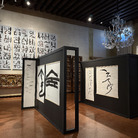 Dal 8 November 2025 al 11 January 2026
Venezia | Museo Correr
Dal 8 November 2025 al 11 January 2026
Venezia | Museo Correr
CARATTERI. Calligrafia e tipografia: Corea del Sud e Stati Uniti
-
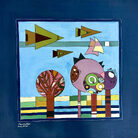 Dal 8 November 2025 al 22 February 2026
Brescia | Museo di Santa Giulia
Dal 8 November 2025 al 22 February 2026
Brescia | Museo di Santa Giulia
Material for an Exhibition. Storie, memorie e lotte dalla Palestina e dal Mediterraneo
-
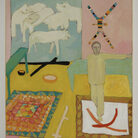 Dal 8 November 2025 al 18 January 2026
Perugia | Perugia, Spoleto e Gubbio
Dal 8 November 2025 al 18 January 2026
Perugia | Perugia, Spoleto e Gubbio
Mimmo Paladino. Antologica
-
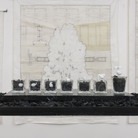 Dal 7 November 2025 al 25 January 2026
Roma | Museo Carlo Bilotti Aranciera di Villa Borghese
Dal 7 November 2025 al 25 January 2026
Roma | Museo Carlo Bilotti Aranciera di Villa Borghese
Silvia Scaringella. Deus sive natura
-
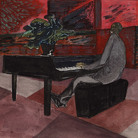 Dal 5 November 2025 al 1 March 2026
Asti | Palazzo Mazzetti
Dal 5 November 2025 al 1 March 2026
Asti | Palazzo Mazzetti
PAOLO CONTE. Original
-
 Dal 28 October 2025 al 15 February 2026
Brescia | Pinacoteca Tosio Martinengo
Dal 28 October 2025 al 15 February 2026
Brescia | Pinacoteca Tosio Martinengo
Peter Paul Rubens. Giovan Carlo Doria a cavallo


